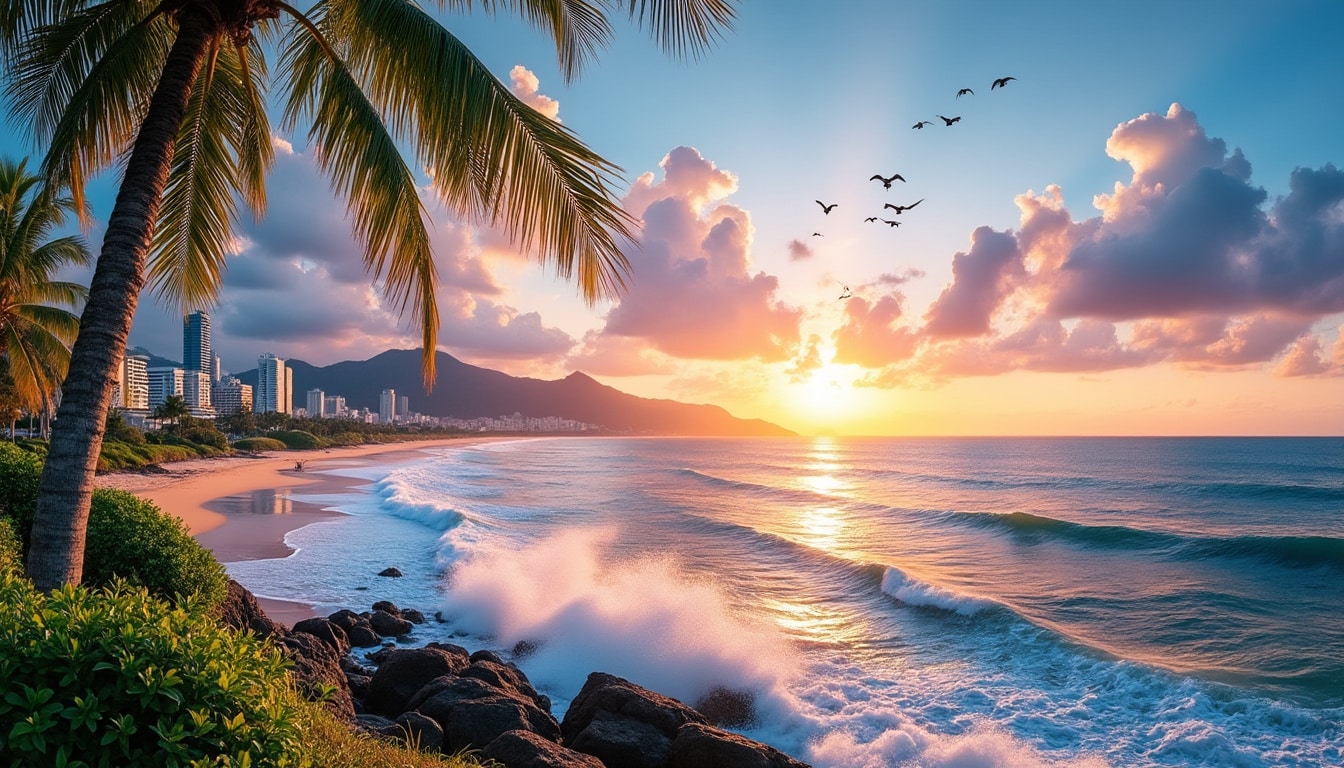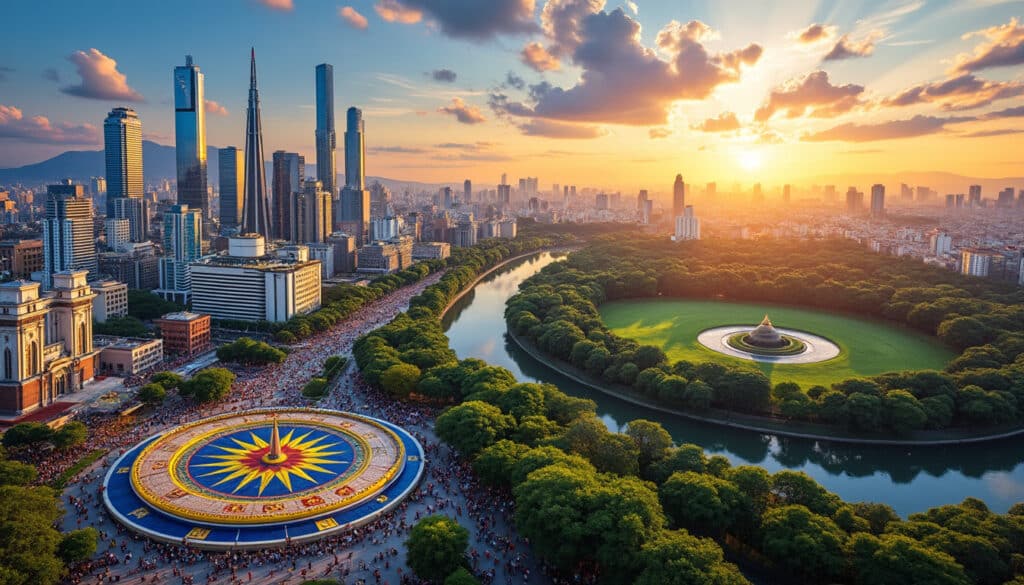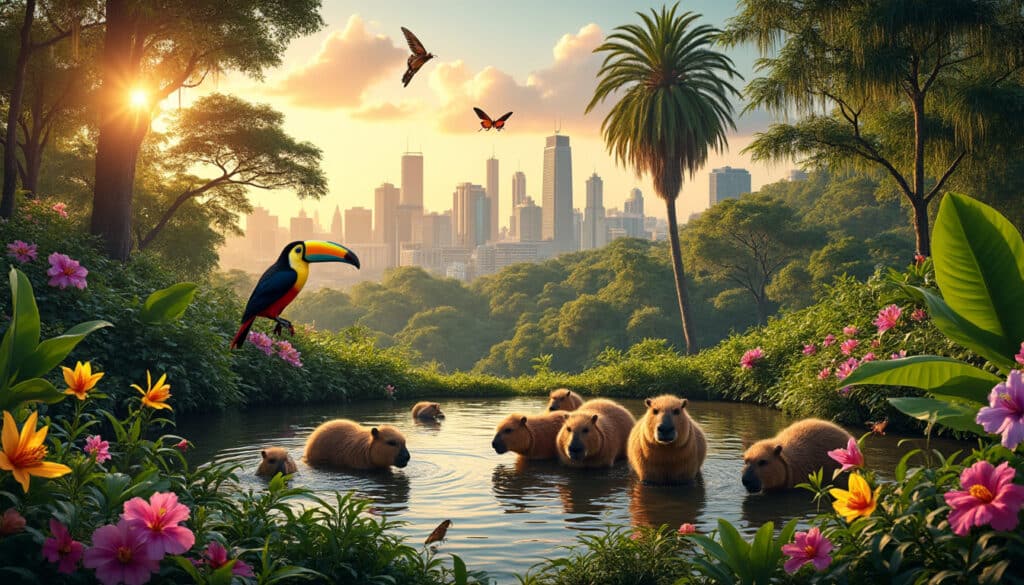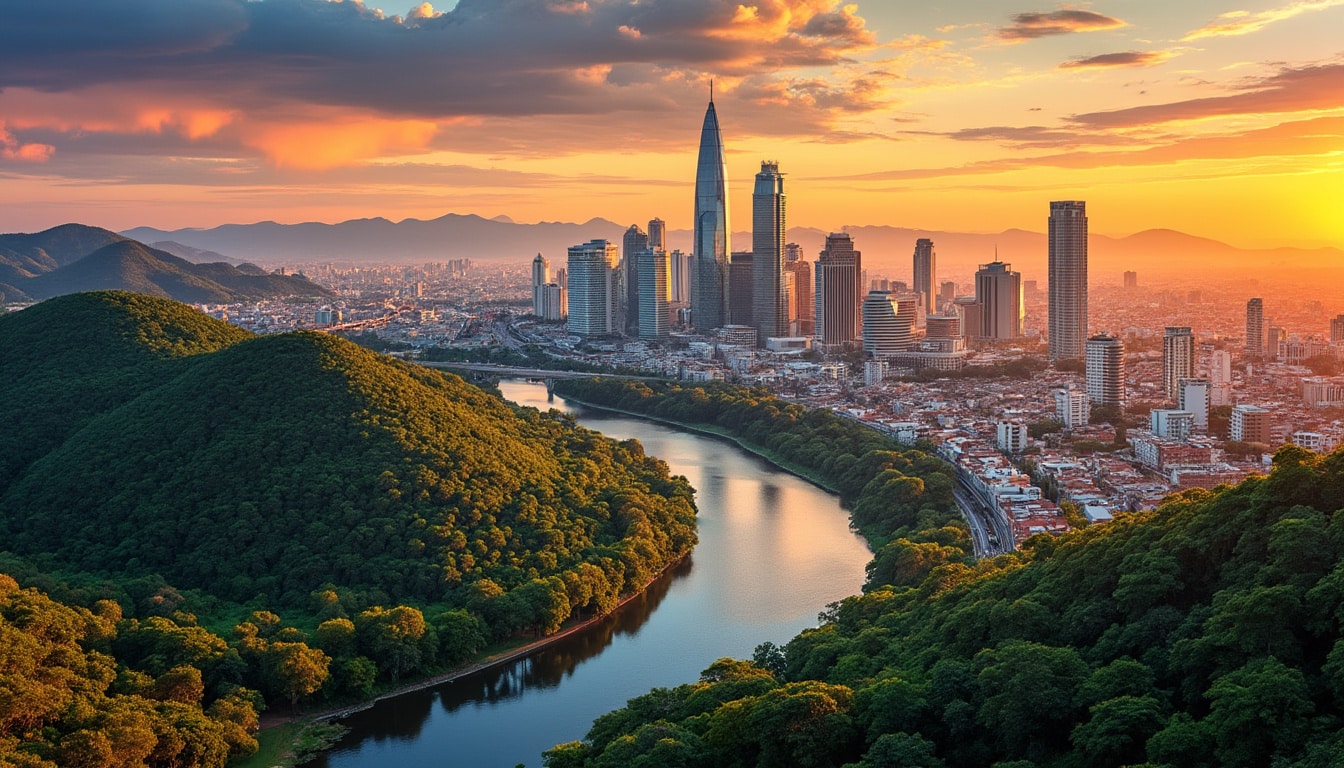São Paulo, a vibrant beacon of Brazilian culture and growth, stands as one of the most intriguing geographical studies in Latin America. It’s a city where modern urban expanses meet lush green spaces, offering a breathtaking blend of natural beauty and human ingenuity. This article delves into the geographical features that make São Paulo unique, exploring its dramatic landscapes, sprawling urban tapestry, and the remarkable interplay between nature and architecture.
The Enchanting Coastal Region of São Paulo
São Paulo’s narrow coastal region serves as a natural masterpiece, offering a striking contrast between the azure blue of the Atlantic Ocean and the lush greenery of the surrounding environment. This strip of coastline, often referred to as the “Gateway to the Atlantic”, stretches for approximately 370 miles, marked by a labyrinth of lagoons and tidal channels. These coastal features make it a hub for maritime and recreational activities, offering the perfect setting for beachgoers and adventure enthusiasts alike.
🏖️ Key Coastal Attractions:
- Santos Beach: Known for its golden sands and bustling boardwalk.
- Ilhabela: An island paradise renowned for its diving spots and waterfalls.
- Guarujá: Often called the “Pearl of the Atlantic” for its stunning beaches.
The elevation along the coast fluctuates, creating an array of microclimates that foster diverse ecosystems. From mangroves to sand dunes, the coastal biodiversity is extraordinary. The Serra do Mar mountain range acts as a natural barricade, distinguishing the coast from the interior highlands. This mountain chain is pivotal in conserving the Atlantic Forest, one of the most threatened rainforests globally. Efforts are ongoing to protect this dense and diverse biome, home to an abundance of flora and fauna.

Moreover, the coastal region is not just about natural beauty; it plays a vital role in the economy. It’s a crucial logistical crossroads for trade, evidenced by the bustling ports of Santos and São Sebastião, which handle a significant portion of Brazil’s exports. This makes the coastal regions crucial not only ecologically but also economically, supporting industries ranging from shipping to tourism.
Exploring the Serra da Cantareira Mountain Range
To the north of São Paulo lies the Serra da Cantareira, a majestic mountain range forming the backdrop to this bustling metropolis. Rising steeply, this range is a defining feature of the city’s landscape. Enveloped in thick layers of the Atlantic Forest, it offers a natural retreat from urban life and is central to São Paulo’s environmental strategy due to its pivotal role in biodiversity conservation and water catchment.
The range acts as a natural air purifier, thanks to its rich vegetation, which helps mitigate pollution levels within the city. The preservation of such an ecological asset is paramount, with current efforts focusing on promoting sustainable tourism and enhancing awareness about conservation. 🌳
Serra da Cantareira Highlights:
- Home to the Cantareira State Park, one of the largest urban forests globally.
- Rich in biodiversity, hosting many endemic species.
- A popular getaway spot offering hiking trails and panoramic views of the city.
The Serra da Cantareira is a key water source for São Paulo, providing precious water reserves essential for millions of residents. The forest also serves as a refuge for wildlife, with species like the howler monkey and toucan adding to its ecological value.
Intriguingly, the region’s history is peppered with tales of Moorish architecture, with its influence visible in various historic structures dotting the landscape. This juxtaposition of natural and historical elements makes exploring the Serra da Cantareira a uniquely multifaceted experience, offering both ecological insights and a trip down history’s lane.
The Extensive Interior Plateau and its Significance
The expansive interior plateau of São Paulo is a geographic marvel that defines much of the state’s landscape. Covering vast areas, this plateau is integral to the state’s agricultural prowess, primarily due to its fertile soils. It has become synonymous with Brazil’s bumper coffee harvests, a key export that significantly boosts the national economy.
Elements of the Plateau:
- Fertile Plains: Ideal for agriculture, particularly coffee plantations.
- Hydroelectric Potential: Numerous rivers like the Paraná and Grande are harnessed for energy production.
- Sprawling Urban Centers: Cities exploiting the plateau’s strategic location for development.
This plateau rises to an elevation of around 800 meters above sea level, offering a moderate climate that supports diverse agriculture besides coffee, such as sugarcane and orange groves. The plateau’s topography facilitates the creation of reservoirs and dams, vital for hydroelectric power, demonstrating a blend of natural advantage turned into economic viability.
Significantly, the Metropolitan Region capitalizes on its plateau advantage for infrastructure development. This area sees a flourishing juxtaposition of urbanization with nature, often showcasing hard-edged modern architecture against rolling agricultural lands. Efforts to maintain this balance are evident in city planning initiatives that incorporate green corridors and sustainable urban farming methods.
Protection of Resources: Rivers and Challenges
The state’s rivers, such as the Tietê and Pinheiros Rivers, define both its geography and challenges. Historically, these rivers played a critical role in trade and transportation, but modern-day pollution has significantly altered their narrative. Efforts are currently underway to rehabilitate these water bodies, focusing on reducing contamination and restoring ecological health.
The cutting-edge technologies and community-driven initiatives in place aim to rejuvenate the rivers, which are vital waterways for the city. For instance, projects involving biological digesters and bioremediation are garnering attention as innovative solutions to restore aquatic ecosystems.
This rejuvenation is crucial not only for ecological health but for rediscovering the rivers as recreational and touristic hotspots, thereby revitalizing spaces once forsaken due to degradation. The holistic approach adopted by São Paulo is a testament to a global understanding of sustainable urban and environmental symbiosis.
São Paulo’s Urban Landscape and the Role of Green Spaces
Notably, São Paulo stands out with its imaginative use of green spaces within an urban matrix, each serving as a haven amidst the bustling city life. From the iconic Ibirapuera Park to several smaller verdant retreats, they are integral to the city’s identity and are instrumental in improving the quality of urban life.
🌿 Key Urban Green Spaces:
- Ibirapuera Park: Equivalent to Central Park, it is a cultural and leisure destination.
- Parque da Aclimação: A community favorite for bringing families and nature enthusiasts together.
- Horto Florestal: Offers a glimpse into the biodiversity of the Atlantic Forest within urban limits.
These areas serve as vital green lungs for São Paulo, mitigating the urban heat island effect and providing spaces for recreation and social activities. The strategic preservation and expansion of such zones emphasize not only ecological but social advantages, bridging gaps between different communities and promoting cultural exchanges.
The juxtaposition of skyscrapers with expansive parks seeds an emergent urban culture where modern living harmonizes with nature. On the weekends, you’ll often find these spaces bustling with local artisans, food stalls, and music events, echoing São Paulo’s vibrant social tapestry. Recently, initiatives have been launched focusing on developing more sustainable infrastructure in tandem with these green spaces, fostering a vision of future-forward city planning.
Frequently Asked Questions (FAQ)
Below are some common questions and answers related to the geography of São Paulo:
- What is the climate like in São Paulo?
São Paulo has a humid subtropical climate, with warm summers and mild winters. The average annual temperature is approximately 24°C (75°F). - Why is the Tietê River significant to São Paulo?
The Tietê River is a crucial waterway for São Paulo, historically significant for trade and transport. Efforts are underway to rehabilitate it due to pollution. - How does São Paulo incorporate green spaces into its urban areas?
São Paulo integrates parks like Ibirapuera into city planning to offer recreational areas and mitigate pollution, fostering a healthier urban environment. - What role does the Serra da Cantareira play in São Paulo’s geography?
The Serra da Cantareira mountain range is crucial for biodiversity, water catchment, and offers natural spaces for recreation within its expansive urban environment.
For more insights into São Paulo’s diverse geography and fascinating features, explore resources like Sao Paulo Booking to deepen your understanding and possibly plan an enriching visit!

Nature and Geography of Sao Paulo
Welcome to São Paulo, a city that serves as a fascinating intersection between urban marvels and natural wonders. Known as the largest city in Brazil and one of the most populous in the world, São Paulo is not just a…

Location and coordinates of Sao Paulo
The enchanting city of São Paulo, with its urban jungle and kaleidoscope of cultural experiences, is a place that captivates hearts and minds. Known as the beating heart of Brazil, São Paulo is not just a geographic location but a…

Nature and wildlife in Sao Paulo
Although São Paulo is often referred to as a concrete jungle, it harbors a wealth of natural parks, gardens, and wildlife that allow residents and visitors to escape the urban hustle and connect with nature. From expansive green spaces and…

Rivers and water near Sao Paulo
Among the pulsating rhythms of urban life in Sao Paulo, a hidden aquatic world thrives, just waiting to be explored. The rivers and water bodies near Sao Paulo, although overshadowed by the city’s iconic skyscrapers and frenetic pace, offer a…

